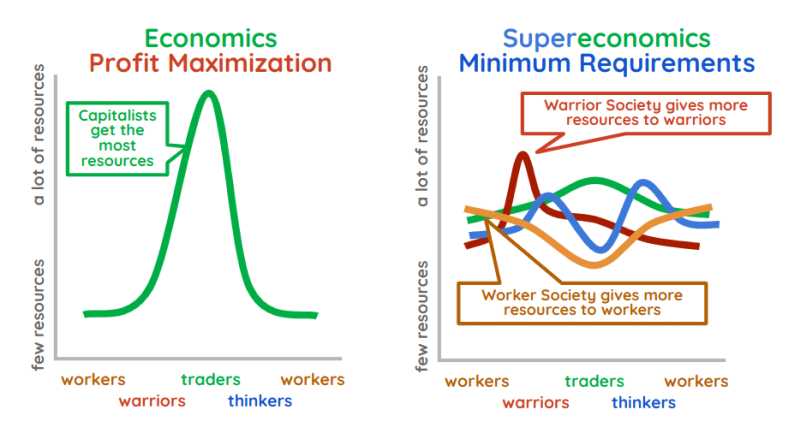Use Value
Table of Contents
Principles
| Principles | Assertions |
|---|---|
| Use Value requires 1 entity | We replace Marginal Utility with Minimum Needs since use-value is subjective |
In Neoclassical Economics, the use-value is called ‘utility’ and is the foundation of its theories like marginal utility.
Marginal Utility
According to Economics, utility is the satifaction that you get from a good or service.
Initially, this satisfaction increases with every additional item bought. But in time, your satisfaction from the item increases in smaller amounts until it no longer increases.
If you get more, then it might cause dissatisfaction, which is negative satifaction. Just before that point, the utility that you get is “marginal”. This feeling tells you to stop buying.
This system of marginal utility requires the quantification of pleasure or utility.
- This is then ‘maximized’ as ‘profit maximization’ in Economics.
The problem is that, in the physical domain, objects are finite. So a maximization of objects in one area will lead to a minimization in another.
- This minimization leads to poverty and inequality.
When the maximization is done unnaturally, such as through speculation, the fake maximization will be exposed for its true value which is not so high.
- This leads to as economic crashes.
Supereconomics disregards marginal utility because utility is subjective. Metaphysically, it is caused by the constant fight between the 2 Forces of Positive and Negative.
- Supereconomics always pushes for the Positive and so there is constant dynamism
Each person gets a different level of satisfaction at every good or service, and so it would be wrong to create a rigid, objective model for dynamic, subjective utility.
This error manifests as investors denying investments to sectors, industries, or goods and services that do not fit their own utility models (i.e. those that do not meet the return-on-investment that they want).
- This then causes economies to regularly stagnate, and even decline, due to the decline of those underinvested sectors or industries.
Minimum Needs
Instead of marginal utility, Supereconomics uses:
- minimum needs, to be explained in Chapter 5
- the grain index, explained in Chapter 8.

These concepts will let people spend and invest for the essential sectors or industries of the economy, whether it is profitable or not.
- The minimum needs is the base-state of the society-organism
- The grain index is the relativistic adjustor through space and time
Supereconomics replaces marginal utility with minimum needs and the grain index
In this way, those sectors will remain capitalized and functioning. This will then prevent price shocks or externalities that grow into crises which harm the sustainability of the supereconomy*.
*An economy that follows our principles of Supereconomics
Minimum needs are based on use value. This makes it easier to assess just as personal budgeting is easier than organizing a labor force or scheduling and financing a production run.
All you need is the census of the population. From there, you can assess the minimum resources needed by that population.
Providing those resources, however, is a different issue as it requires logistics and planning. This is the job of the economic system.